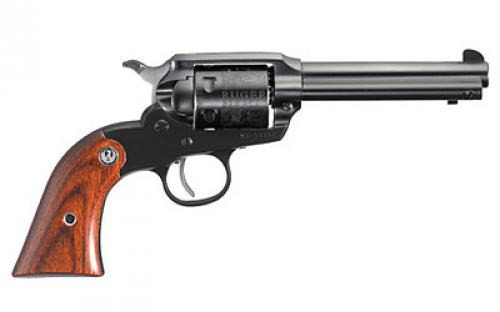Ruger Old Model Single Six Serial Number History

Ruger Security Six, Single Six, Service Six Serial Number History Security-Six, Speed-Six, Police Service-Six Revolver (Manufactured from 1972 to 1988) Calibers: 357 Mag, 38 Spl, 9mm Beginning Serial Number: Years of Production: 150- 150- 150- 151- 151- 152- 153- 154- 155- 156- 158- 159- 159- 160- 161- 161- 162- The above chart shows the approximate first serial number shipped for the indicated year. This number should be used as a point of reference only. It is not necessarily the very first serial number shipped, but it can be used to determine the approximate year your Ruger firearm was shipped. Ruger does not necessarily produce firearms in serial number order. There are occasions when blocks of serial numbers have been manufactured out of sequence, sometimes years later. Also, within a model family the same serial number prefix may be used to produce a variety of different models, all in the same block of serial numbers.
And in some cases, firearms may be stored for a length of time before they are shipped. For details on your specific serial number you may contact our Service Department: 336-949-5200 For serial numbers manufactured prior to our electronic records, or for an official letter confirming the details on your firearm please download and mail in the form. Copyright © 2016 by Sturm, Ruger & Co., Inc.
Auction:13193800 Rare Duplicate “D” Prefix Ruger Old Model Single Six. History: 9 Bids ($1.00 starting bid) (Log In to view Bid History). Bid Increment: $1.00. Thus there were over 5,000 Single Six revolvers with duplicate serial numbers.
This is an advance peek of a future article. Hope you enjoy it!

John Back in the late 1940s the United States, freshly recovered from World War Two, had a renewed and apparently insatiable love affair with the “old West.” The movies featured “westerns” with John Wayne, Gary Cooper, Roy Rogers, William Boyd, Gene Autry and many others in roles that glorified the days of the western frontier. In nearly all of these movies, and in similar portrayals on TV, the heroes wielded Colt single action revolvers. The public loved those cowboy sagas, and they loved those old cowboy guns. But strangely, in 1947, Colt’s Patent Firearms Manufacturing Company announced that it would not be resuming manufacture of its classic Single Action Army revolver. Ratchet marketologa o prodelannoj rabote obrazec. The machinery to make it had been dismantled and scrapped as Colt’s attended to the manufacture of other guns during WWII.
Bill Ruger, president and CEO of the fledgling Sturm, Ruger & Company, saw this as an opportunity to step in and provide folks with the ability to purchase a Single Action Army look-alike revolver at a great price, and it could be chambered for the economical.22 Long Rifle cartridge. Ruger broached the subject of a Colt look-alike.22 revolver with his patent attorneys, and they agreed that Colt no longer had patent rights on their classic single action. Thus, Ruger had a green light to begin development of a similar revolver. The nickname of the SAA was the “Peacemaker,” and it was realized that name was pretty much off limits. The name “Single Six” was chosen, and the resulting new gun accelerated the expansion of the Ruger firm. While working as an engineer earlier at the Auto Ordnance company, Bill Ruger was introduced to the concept of investment casting, essentially a modern application of the ancient “lost wax” process used in jewelry making and in dental work.
He initially worked with a jewelry company called Arwood, located in Brooklyn NY, to adapt that process to making the trigger and the hammer of the Single Six. At first that company told Ruger that making an investment cast frame for the new gun would be too much of a gamble. Then they relented to Ruger’s demands and attempted it.
The first results were awful, with much of the production having to be scrapped. Finally getting things straightened out, Arwood successfully began the casting of the Single Six frame in Groton CT under the leadership of a man named Stan Terhune, who was rapidly becoming an expert in the technique. Terhune eventually came to work directly for Ruger and set up a Ruger investment casting shop in Newport, New Hampshire, where operations continue today. Arwood management continued to work amicably with Ruger and provided personnel to act as consultants. Bill Ruger began to hint to the press that a.22 single action revolver was under development, and he and his engineers worked overtime to bring it to fruition.
They designed the revolver with unbreakable coil springs to power the action, dispensing with the Colt system which used more fragile leaf springs. It was slightly reduced in size from the Colt product, but it used very similar lockwork and an “XR3” grip frame that was identical in size and shape to the time-honored grip of the Single Action Army. This grip frame was black anodized aluminum, and topped with black checkered hard rubber grips.